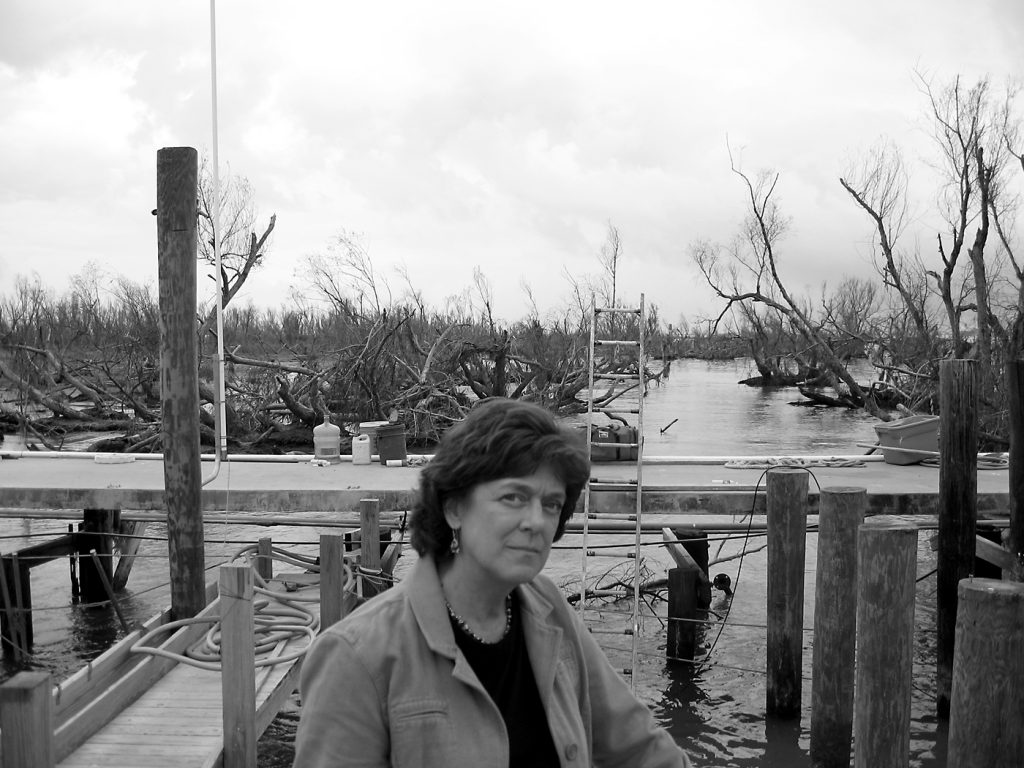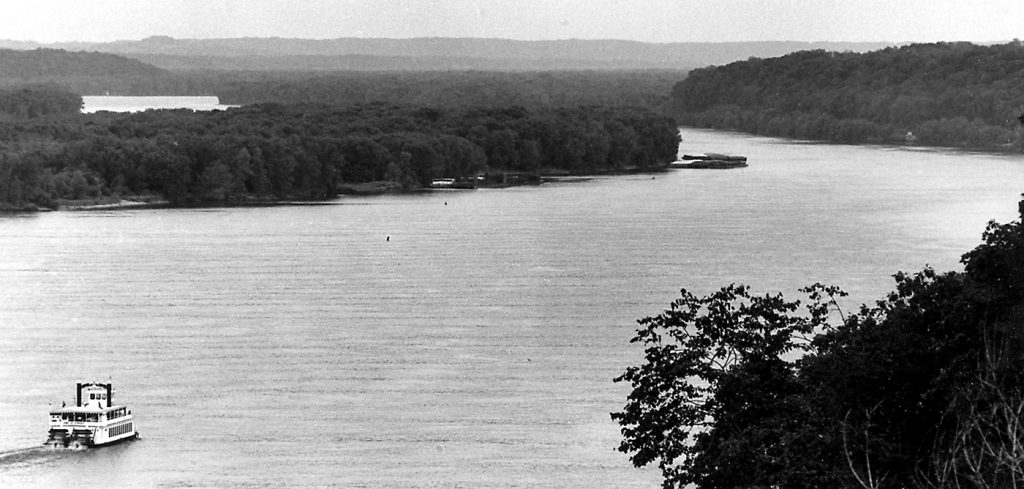
Here is Katherine Fischer’s dream of the Mississippi: “The river slides through our grasp and flows toward its own channel and its own spilling. It is no longer the rhythm of fixing the river. It is no longer the rhythm of letting or not letting. It has become the rhythm of fluidity, the rhythm of being graced beyond our control with wildness. The river’s rhythm—wild, unpredictable, powerful. Awe-inspiring. Fearsome. And even in my dreams, I know the river will have its way” (from Dreaming the Mississippi).
The Mississippi, our country’s greatest river, is the aorta in the bloodstream of American waterways. If commercial transportation suddenly stopped on the Big Muddy, we’d all feel it. If all the streams, big and small, that flowed into the Father of Waters suddenly were dammed back, much of the lower 48 would be underwater.
The Mississippi is also the stage for legends, big and small. Tall tales of river rats and steamboat captains challenging the river’s might, true tales of lives lost and fortunes made, The Adventures of Huckleberry Finn—these are all essential parts of the American narrative landscape.
But as Fischer often reminds us in her new book of essays, Dreaming the Mississippi, today’s Mississippi is a diminished thing. Although conventional wisdom says that you can’t really stop the river from going where it wants to go, we’ve tried awfully hard to do just that. By many measures we’ve been remarkably successful. Although the fury of spring flows can still devastate communities, the Upper Mississippi is really not a river at all, but a series of pools bounded and controlled by a system of locks and dams.

Despite the river’s human shackles, Katherine Fischer of Dubuque and Frentress (across the stream on the Illinois side) cannot control the pull she feels to be part of the Mississippi. While Dreaming the Mississippi often ponders the larger questions of human puniness in the face of nature, the obscene pollution of our waterways, and the devastations that commercialization (both industrial and recreational) have wrought upon wetlands and wildlife, her book also revels in the small personal experiences of life on the river, its feeding of her mind and spirit, the simple pleasure of knitting on the beach or throwing a party on a boat. The river culture flattens Fischer and her husband’s professional economic status so that they are just as comfortable eating hamburgers in the marina joints and participating in the homemade Frentress Lake Fourth of July parade as they are teaching literature in a Dubuque college classroom and running the new national river museum.
Fischer also explores the far-reaching spirit of the Mississippi. The psychic struggles that she experiences over wildness and human control on her home waters color further meditations on the subject on a visit to the Great Salt Lake. The Mississippi as emblematic of all of American culture is revealed during a trip to Japan while Fischer and her husband serve as consultants to a new “Mississippi River Country” exhibit at the American Village theme park three hours from Tokyo. They are only partially successful at untangling the hodgepodge of commingling iconic displays, which include bison roaming both the plains and Rocky Mountains next to a steamboat pilothouse, Elvis’s guitar next to Faulkner’s The Sound and the Fury, John Wayne next to Dolly Parton.
Cultural and water flows intertwine much closer to home, too, and the most poignant, and disturbing, tentacles of Fischer’s Mississippi experience reach down to the Delta. A New Orleans devotee, Fischer is understandably devastated by what she sees in the city when she visits post-Katrina. All the lessons of the foolishness of human control of the river are illustrated in blasted neighborhoods, human misery, and horrendous racial and socioeconomic disparities. For Fischer, the dream of the Mississippi, the wild Mississippi, becomes much more earnest, much more urgent, while standing amidst the wreckage of the lower Ninth Ward.
Fischer’s book is a collection of essays, many previously published. As a result, themes are not always explored in a cohesive line of argument, but at the same time the book’s methodology presents life on and with the river in a more realistic way: you’re never sure what will pop up in front of you. Life on the river is not bounded by neatly packaged narratives or precisely crafted thematic exposition. We learn about life on the river—its joys, its dangers, its meanings—as it chooses to present them to us, not always through our intellectual and imaginative control. As the Mississippi tells us its story, despite the chains we’ve tried to impose, it does after all still assert its wildness and unpredictability.
